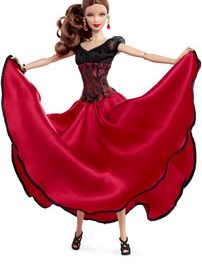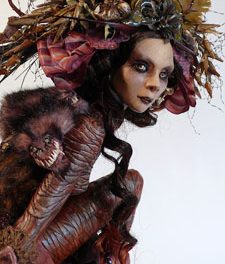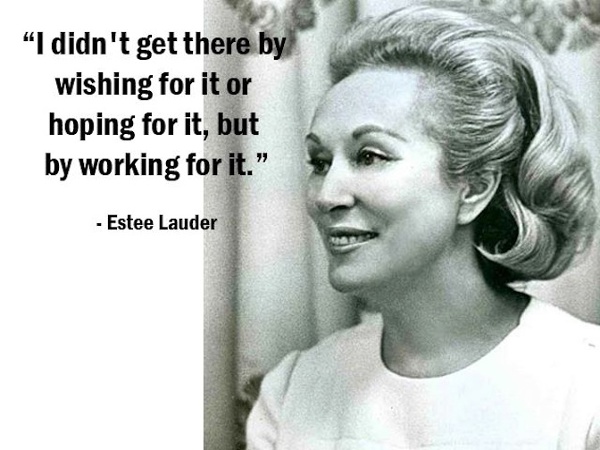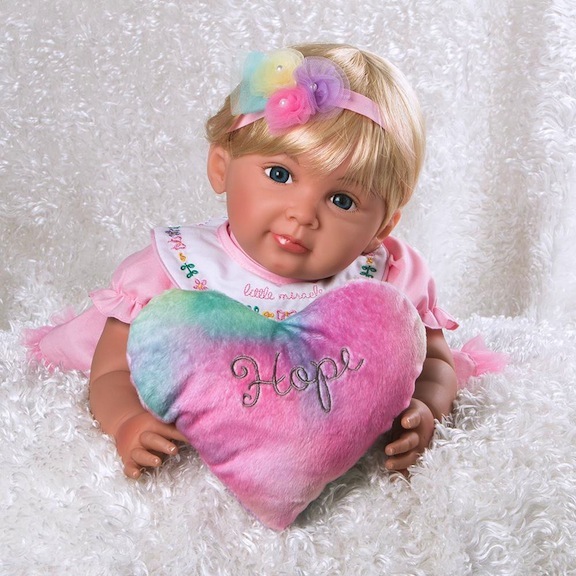
Part of the Rainbow Blessings Collection, Hope is sculpted by Ping Lau for Paradise Galleries.
Photos courtesy of Paradise Galleries
Having resided in New York City for most of my life, and then making the reluctant trek to its suburbs, I still see myself as a city girl. Okay, maybe not “girl” — maybe a “city chick” or an “urban woman.” Just as being a New Yorker means being able to eat breakfast at 2 a.m. — restaurants never seem to close in the Big Apple — it also means that the 9/11 attacks resonate more brutally than they do for other eyewitnesses. While many people were glued to their TVs on that fateful day, I was in the streets of Manhattan, trapped, terrified, and mad. It was an eye-opening day that changed my life forever, and made me rethink the sanctity of life and the importance of living life fully. This year, 17 years after the attack, I will honor that day with portraits of baby dolls: lasting images of innocence and purity; tenderness and limitless possibilities; hope, faith, and love.
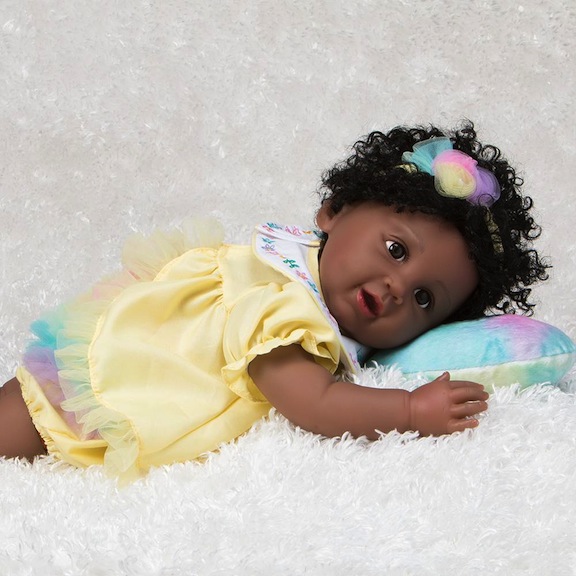
Part of the Rainbow Blessings collection by Ping Lau, Faith assures people to persevere and to stay strong.
Babies and all they promise are the antithesis of 9/11’s evil. They are the emblems of humanity’s best and brightest. That’s a lot for a baby doll to carry, but I think they are capable of shouldering that burden. Just trolling through my photos of baby dolls submitted over the past years, I pulled up a few that really embody goodness, and, sadly, that is what was missing on that fateful, tragic day. Baby dolls seem like a goofy and giggly hobby. After all, if some art dolls can depict seductive wiles, mythological fables, or man’s inhumanity to man — the real big issues of life — then aren’t baby dolls just concoctions of cuteness, sweetness, and lots of pink and blue fabric?
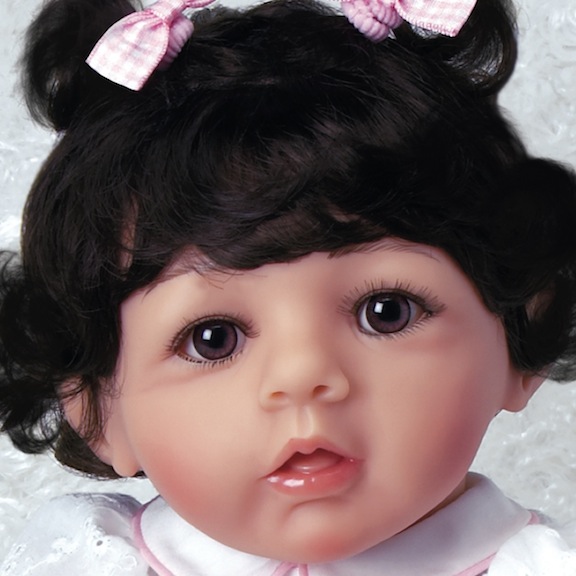
Baby Michelle is an innocent vinyl baby doll sculpted by Pat Moulton.
Well, to answer that baby doll definition, I’ll turn to Paul McCartney, a much better known scribe than I am. Back during his days with Wings, he cranked out a tune about “Silly Love Songs.” One of the lyrics questioned: “You’d think that people would have had enough of silly love songs/I look around me and I see it isn’t so/Some people want to fill the world with silly love songs/ And what’s wrong with that?” Sir Paul has a point. Often the very things that are dismissed as being silly and trite, or commonplace and cute, carry an almost mystical power to touch and to connect. Baby dolls do that. Because they are life’s common denominator, they have a power that is indescribable. They contain a relatable factor that other dolls could only wish to hold and own.
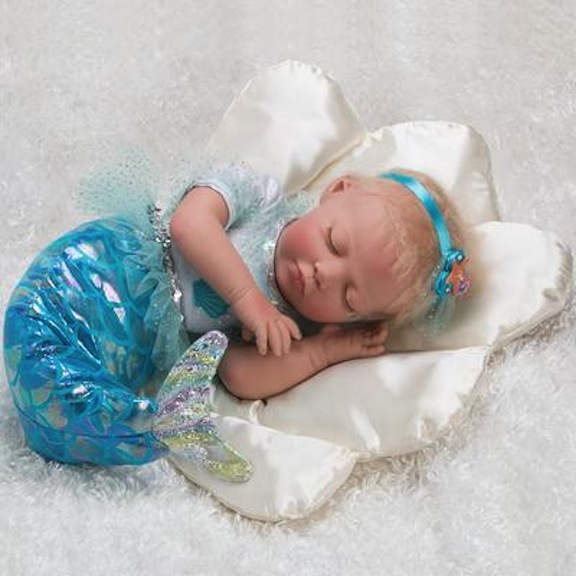
Paradise Galleries’ first fantasy baby doll: Mystic Mermaid by Jannie de Lange
Let’s face it: Most of us will never be a fairy princess (unless we go to Party City and plunk down $50 for the trappings); we’ll never be a Native American chieftain. We won’t be an international runway model or a teenage fashion doll that never ages or gains an ounce. (Barbie, eat a cupcake once in a while!) Many of the dolls that we covet and collect are ambassadors of desired lives and existences that we’ll never know firsthand. They truly are wish fulfillment, unattainable and completely fantastical. Baby dolls, on the other hand, are reflective of what we once were. Regardless of where we all currently are in our lives, we all began as babies. We all were once that small, once that innocent, once that untainted and unblemished. We all had the future in the palms of our tiny, tiny hands. Where we chose to go, that’s where we all depart from one another.
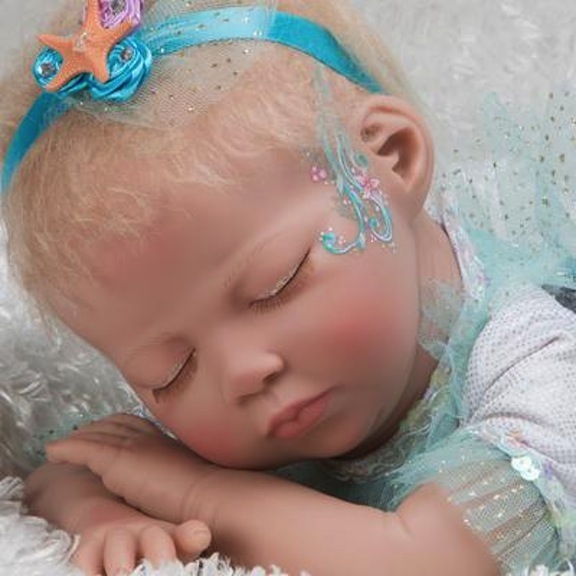
Mystic Mermaid is a debut fantasy baby doll from Paradise Galleries. The face is lovely and languid.
Interestingly, babies are the closest we will ever get to being a real-life fairy. J.M. Barrie, the author of “Peter Pan,” likened the happiness of a baby to the creation myth of fairies and pixies. In his book, Barrie wrote: “When the first baby laughed for the first time, its laugh broke into a thousand pieces, and they all went skipping about, and that was the beginning of fairies.” Babies are the life-force for fairies; baby dolls are the creations that let grown women re-live and re-experience their happiest, most treasured moments.
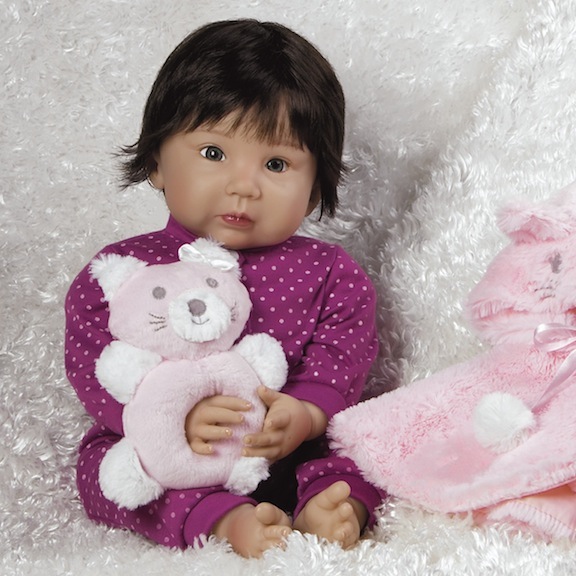
Smitten Kitten is a delightful pairing of baby doll and snuggly cat. The duo is sculpted by Ping Lau.
Baby dolls are indeed the anchors for adult collectors who remember their own children at that precious moment where everything seemed possible and doable. Poised at the start of life, babies are a wellspring of enduring hope and endless emotions. The sound of a baby’s laugh and the crinkle of their eyes are intoxicants, and YouTube is rife with infant videos that have gone viral. People love to see babies guffaw and gurgle over the most inane actions. (Rip up a piece of paper in front of a baby and you’re akin to Chris Rock, Jerry Seinfeld, and Margaret Cho all rolled up into one! That is a hilarious act to a baby!)
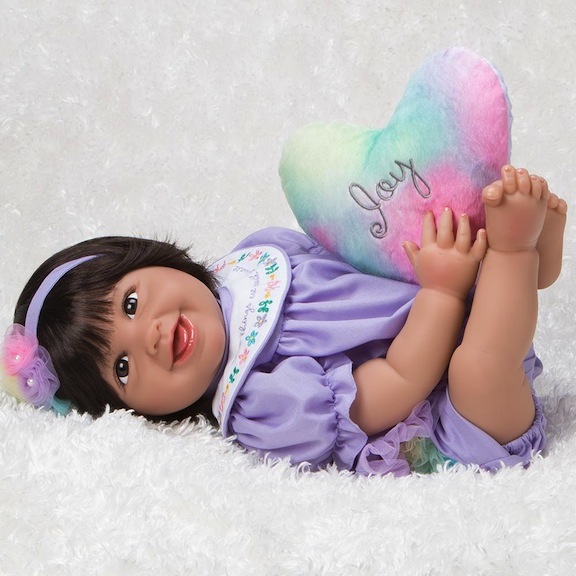
Joy exemplifies inner happiness, laughter, and exuberance. Part of the Rainbow Blessings collection, Joy is a Hispanic baby doll that is friends with Faith and Hope.
In fact, baby dolls that are boisterously laughing or broadly smiling are particularly sought after by collectors. Happy babies, cheerful babies, chortling babies — they are touchstones to parents and grandparents, reminding them of their children’s origins and their own past youth. A baby doll reminds the collector of their own child’s beginnings and even their own hopes and aspirations a few decades ago. Baby dolls are time machines.
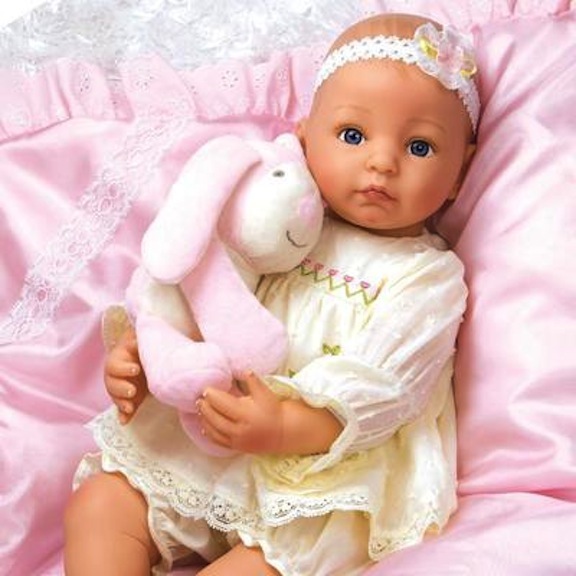
Baby Bella, sculpted by Fiorenza Biancheri, is a 2018 Dolls Award of Excellence Industry Choice winner.
That is why on this week of September 11, 2018, I am using baby dolls as a time conduit to eradicate the horrors and the destruction of that clear, sunny Tuesday morning. Looking at these baby dolls, I transport myself to a time when the numerals “911” meant a police phone number and nothing more.
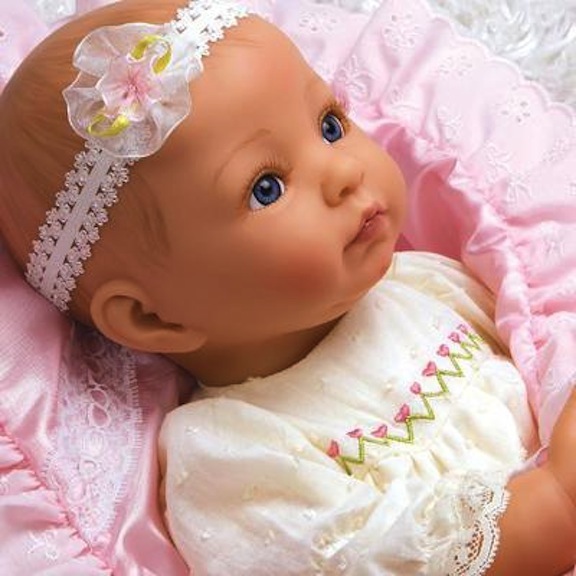
Baby Bella is the GentleTouch Vinyl newborn by Fiorenza Biancheri. Her face speaks of life’s worth and value.
Baby dolls are not a silly collectible. They are not childish or juvenile. They are essential for confirming that life is still worth living, valuing, and pursuing. Baby dolls, such are these from Paradise Galleries, are this year’s unsung 9/11 heroes.

